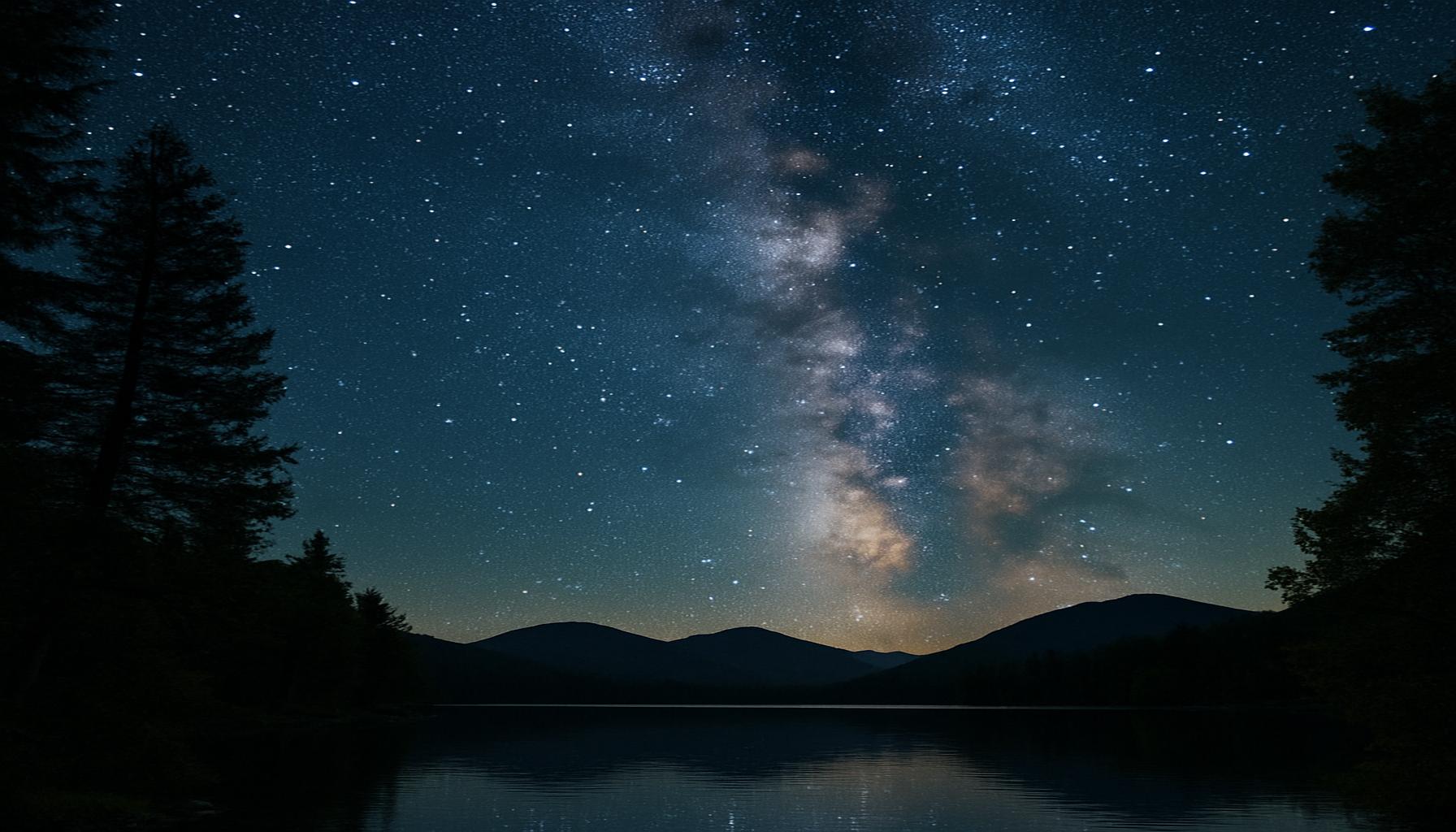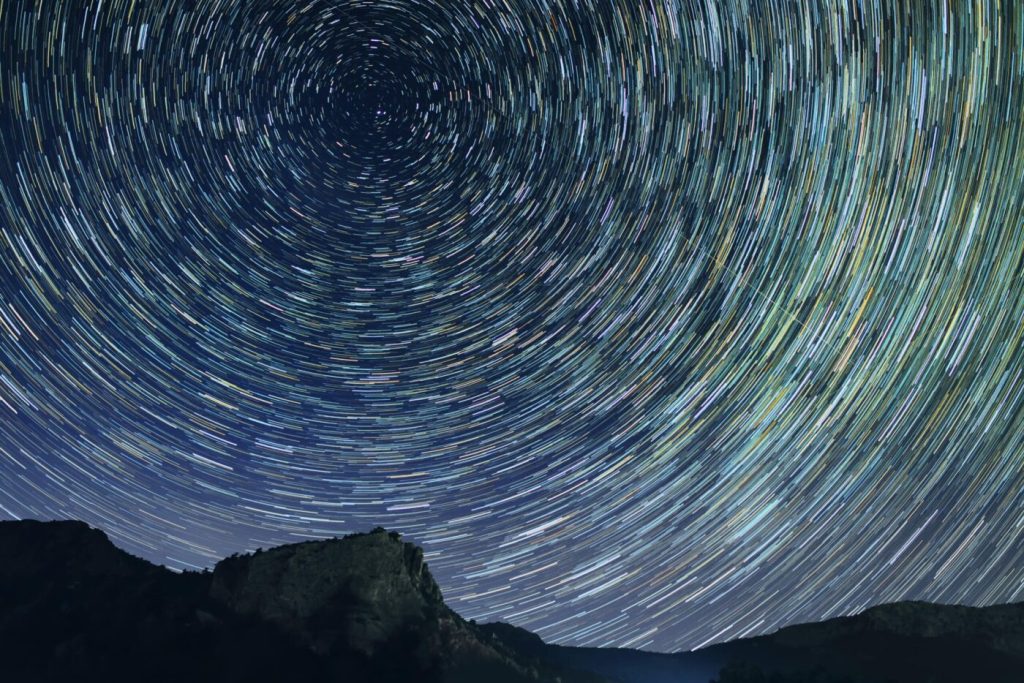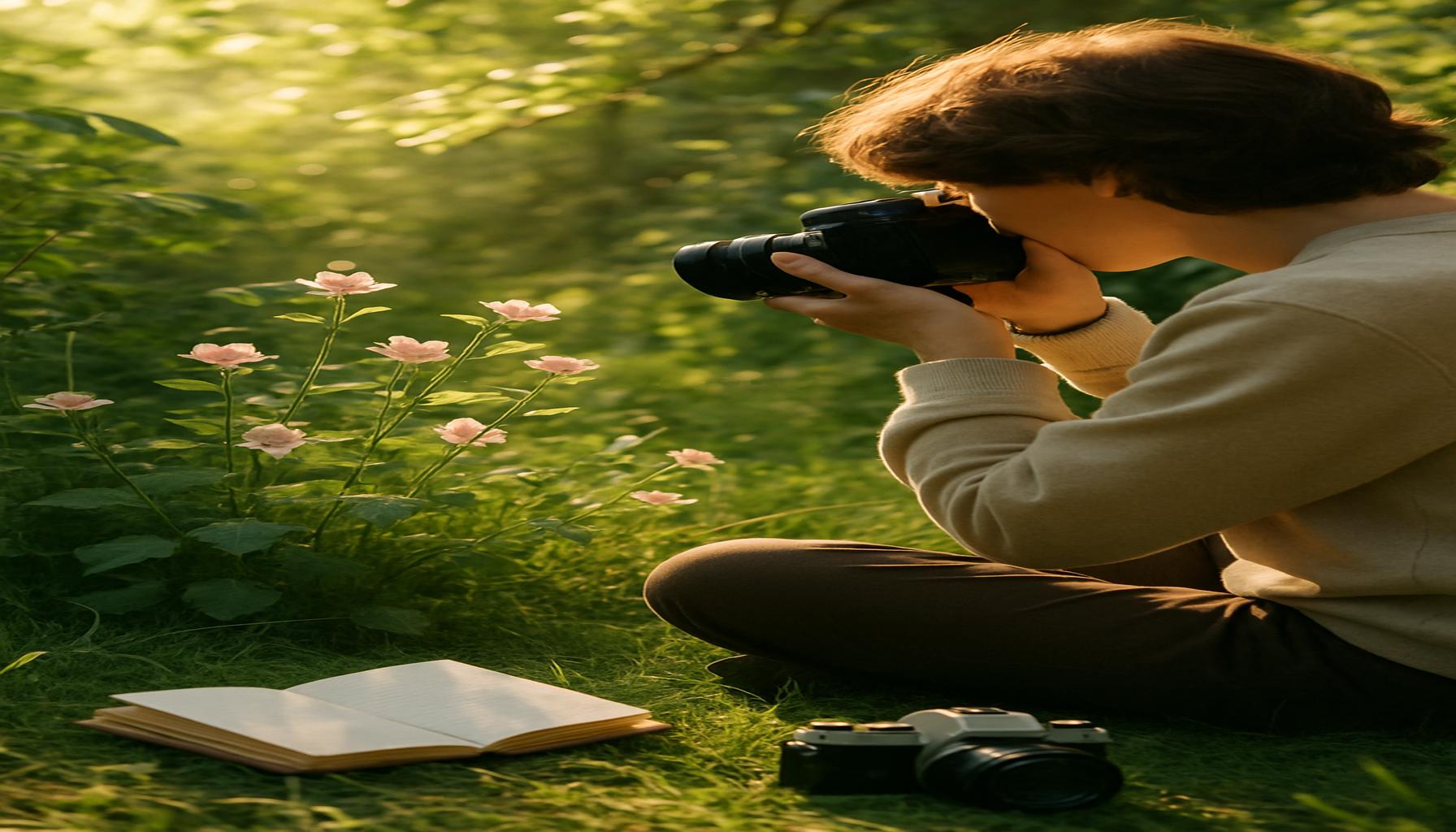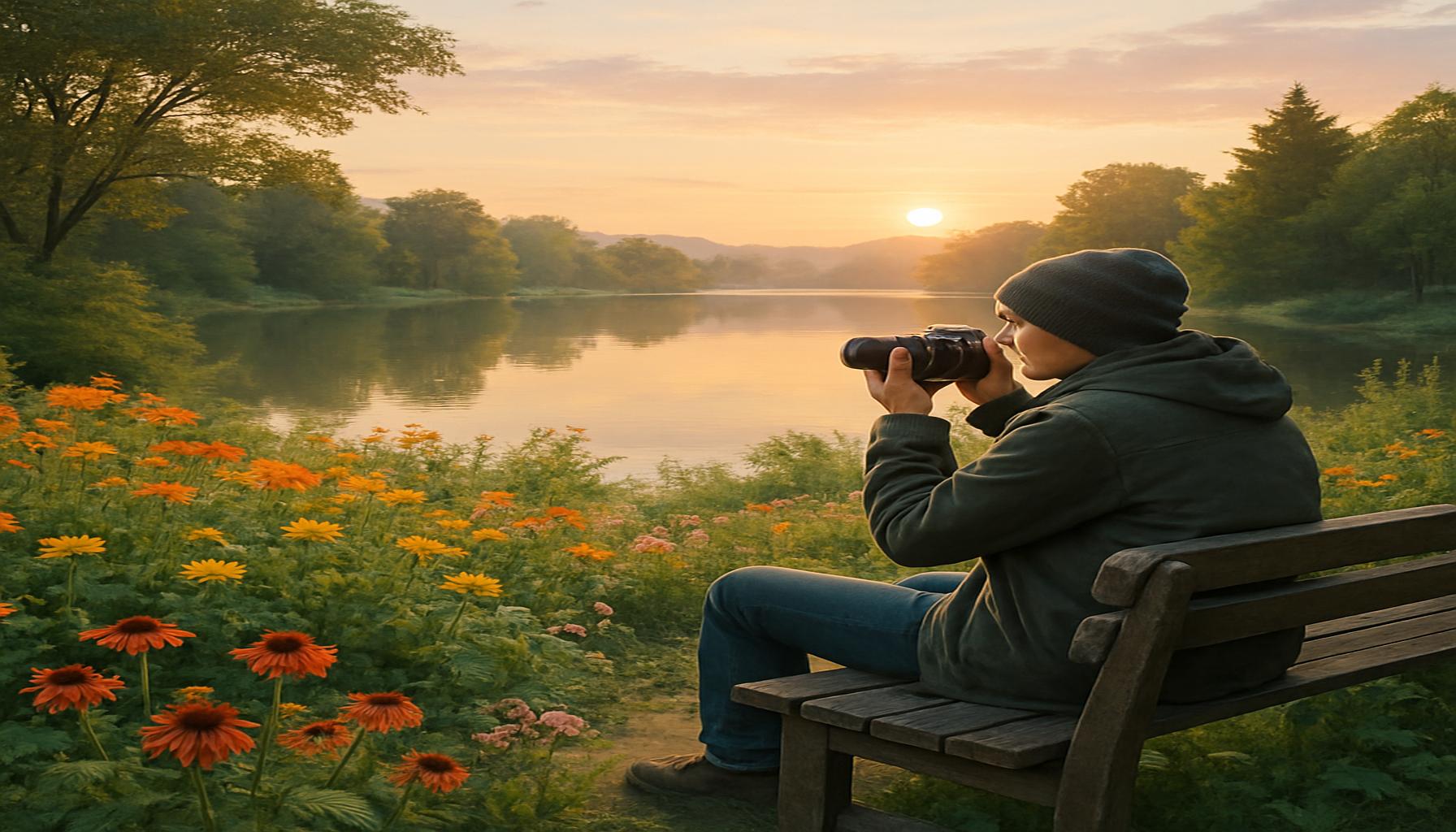Night Photography Techniques: How to Capture the Magic of the Starry Sky

Discover the Wonders Above
As the sun dips below the horizon, a captivating transition occurs, revealing an enchanting tapestry of lights that paint the night sky. Night photography not only allows enthusiasts to capture the beauty of this celestial display, but it also invites you to explore a world that often goes unnoticed during the day. The thrill of translating this atmospheric magic into visual stories makes for an incredibly rewarding photography experience.
For beginners and seasoned photographers alike, understanding the fundamental elements that contribute to exceptional night photography will help elevate your craft. Here are crucial aspects to consider:
- Equipment: Investing in a sturdy tripod is vital, as it stabilizes your camera during long exposure shots, preventing any unwanted blur. Pair it with wide-aperture lenses—often with an f-stop of 2.8 or lower—to collect maximum light. Consider cameras with high-performance sensors, such as the full-frame models from brands like Canon or Nikon, as they excel in low-light conditions.
- Timing: The best nights for shooting are moonless, particularly during a new moon. This is when constellations and the Milky Way can be viewed more vividly. National parks, such as the Grand Canyon or Yosemite in the United States, provide remote locations away from urban light pollution, enhancing visibility for your night sky photography.
- Settings: Familiarize yourself with manual camera settings to harness the power of ISO, shutter speed, and aperture. A common starting point may include an ISO of 1600, aperture wide open, and a shutter speed between 10-30 seconds; adjustments can be made based on lighting conditions.
With the right techniques, cameras are capable of revealing breathtaking details of distant galaxies, vibrant constellations, and the ethereal glow of the Milky Way. For instance, photographers often capture star trails by using a long exposure, resulting in stunning circular patterns that illustrate the Earth’s rotation. The magic lies not solely in the images produced, but also in the tranquility and solitude experienced while gazing under a blanket of stars.
If you wish to deepen your knowledge of this art form, consider exploring advanced techniques such as light painting, where you introduce artificial lighting into the frame, or focus stacking, which enhances depth of field in your final image. Whether you aim to encapsulate the brilliance of a solitary star or the grandeur of an expansive celestial canvas, mastering the ins and outs of night photography can empower you to create extraordinary pieces that resonate long after the shutter clicks.
In conclusion, the night sky is not merely a dark expanse; it is a vibrant stage that awaits your exploration and creativity. By embracing night photography, you reveal not only the beauty of our universe but also the hidden stories that unfold within its depths.

DIVE DEEPER: Click here to discover more
Essential Techniques for Stunning Night Photography
To truly harness the beauty of the night sky in your photography, it’s imperative to master certain techniques that can significantly enhance your results. The art of capturing the stars requires a blend of technical skills and creative insight. Here are some essential techniques that every night photographer should apply to create mesmerizing compositions:
- Long Exposure: One of the most effective techniques in night photography involves using long exposure times. By allowing your camera to collect light for several seconds to minutes, you can create vibrant images filled with detail. For star trails, for instance, exposures of 30 seconds to several minutes will showcase the movement of stars, creating beautiful arcs across the frame.
- Light Painting: This technique involves using a handheld light source to illuminate parts of your scene, adding depth and interest to your composition. Whether using flashlights, sparklers, or LED lights, the addition of light can create whimsical effects and highlight foreground elements while the stars sparkle above.
- Aperture Adjustment: Utilizing a wide aperture (such as f/2.8 or lower) allows more light to enter your lens. This is especially beneficial in night photography, as it can create a beautifully blurred background, making your primary subject or the stars stand out in sharp detail. Experimenting with aperture can lead to unique bokeh effects that add creativity to your shots.
- Manual Focus: Autofocus can struggle in low-light situations, which is why manual focus can be an invaluable tool. Before darkness falls, focus your lens on a distant light or use the live view feature with maximum zoom to ensure sharp focus on the stars. Once set, locking your focus in ensures that it won’t shift during your shooting.
Moreover, understanding the concept of Star Density can greatly impact your photography. Recognizing that certain locations, free from light pollution, reveal more stars can enhance your capabilities. Areas such as the Badlands National Park in South Dakota and Big Bend National Park in Texas are renowned for their impeccable night skies. Researching and visiting dark sky parks can provide the perfect backdrop for night photography, acting as a canvas for your creativity.
In addition, consider the position of the Milky Way. Planning your shoot to coincide with its appearance in the sky enhances the chances of capturing stunning photos. There are many applications available that can help you predict where the Milky Way will be located each night, allowing for strategic compositions that feature this galactic gem prominently within your frame.
By honing these techniques and understanding your environment, you can unleash your potential as a night photographer. Embrace the challenge of working in low light, and with practice, your images will begin to reflect the magical beauty of the celestial wonders above.
Exploring Advanced Night Photography Techniques
When it comes to capturing the breathtaking beauty of the night sky, the use of advanced photography techniques can significantly enhance your results. One popular method among photographers is the **long exposure** technique, where the camera’s shutter remains open for an extended duration, allowing more light to enter the lens. This is particularly useful for capturing the intricate details of stars, which may otherwise be missed in a standard shot. Using this technique, you can create stunning images that showcase the movement of the stars in the sky, effectively turning them into mesmerizing trails.
Essential Equipment for Stellar Shots
To unlock the full potential of your night photography, investing in the right equipment is crucial. A sturdy **tripod** is essential for stability during long exposures, ensuring that your images remain sharp and free of blurriness. Additionally, a camera with manual settings allows you to adjust ISO, aperture, and shutter speed, giving you complete control over your shots. Utilizing a lens with a wide aperture (like f/2.8 or lower) can help capture more light, making it easier to photograph darker scenes filled with celestial wonders. Don’t forget to include a **remote shutter release** or utilize the camera’s timer to prevent any camera shake during the exposure.
Planning Your Night Shoot
Before heading out for your photo session, planning is key. Understanding the **moon phase** is important; a new moon provides the darkest skies, ideal for star visibility, whereas a bright full moon may wash out fainter stars. Websites and apps like *Star Walk* or *PhotoPills* help you locate celestial events and plan your shoot effectively. Additionally, scouting locations with minimal light pollution will not only improve the quality of your shots but also enhance the overall experience of photographing the starry sky.
Post-Processing for Perfect Night Shots
After capturing your mesmerizing images, post-processing becomes vital to highlight the intricate details of the night sky. Programs like Adobe Lightroom or Photoshop facilitate adjustments in contrast and brightness, allowing you to enhance those beautiful star trails or the rich textures of the Milky Way. Techniques such as stacking different exposures can result in cleaner images with reduced noise, further enhancing the striking beauty of your night photography. The right processing techniques can turn a good photo into an extraordinary one, allowing you to convey the magic you experienced while capturing the night sky.
Conclusion: Capture the Magic
Armed with these advanced night photography techniques, along with the right equipment and planning, you are well on your way to capturing the enchanting beauty of the night sky. From long exposure shots to hands-on post-processing, each step brings you closer to transforming your vision into stunning photographs. Engage with your surroundings and let the magic of the starry sky inspire your creativity.
DIVE DEEPER: Click here to discover more about musical collaboration
Enhancing Your Night Photography with Creative Strategies
The techniques you’ve developed are only the beginning of your journey into night photography. To fully capture the magic of the starry sky, consider incorporating some creative strategies that can elevate your images and help convey the beauty of the night. Here are several valuable tips to enrich your night photography experience:
- Foreground Interest: To create a captivating composition, include an engaging foreground element in your images. This may be a silhouette of a tree, an old barn, or rock formations. By adding depth with foreground interest, viewers can relate more to the photo, showcasing the vastness of the sky above and creating a sense of scale.
- Use of a Tripod: Investing in a sturdy tripod is crucial for night photography. A firm base allows for longer exposure times without the threat of camera shake, ensuring your images remain sharp and clear. Look for tripods that are adjustable for various terrain, enabling you to stabilize your camera even on uneven ground.
- ISO Settings: Understanding how to effectively manipulate your camera’s ISO settings is key. Higher ISO values (like 1600 to 3200) are advantageous for night photography; however, keep in mind that they can introduce noise in your images. Strive for a balance where the right ISO enhances image quality while still capturing the twinkling stars.
- Timelapse Photography: If your goal is to showcase the transformation of the night sky, consider creating timelapse videos. This technique involves capturing images at set intervals and then stitching them together to create a fluid motion effect. Apps like Intervalometer can help automate the process, allowing your camera to capture the wonders of the celestial dance.
Beyond the exposure settings and equipment, another vital aspect is weather conditions. Clear skies are essential for night photography, so be sure to check the forecast before heading out. Humidity can lead to fog, while clouds can obscure your view of stars. Utilize apps such as Clear Outside or Weather Underground, which provide detailed satellite images to help plan your shoots during optimal weather conditions.
Moreover, take advantage of light pollution maps, which can guide you to darker areas for optimal stargazing experiences. Websites like Dark Site Finder allow you to locate spots with minimal artificial light interference. Being in the right location is the first step to achieving stunning images of the night sky.
Another factor often overlooked is the timing of your photography session. New moons provide excellent opportunities for capturing the night sky since the lack of moonlight allows more stars to shine through. Tracking the lunar cycle can lead to optimal shooting dates, maximizing your chances of stunning compositions.
Lastly, consider your post-processing techniques as part of your night photography workflow. Software like Adobe Lightroom and Photoshop can help enhance the vibrancy, contrast, and clarity of your images, ensuring that the final result reflects the magical atmosphere of your night sky observations. Utilizing these tools can turn a good photo into an extraordinary one, perfectly capturing the celestial wonders.
As you explore these additional strategies, remember that the enchanting world of night photography is not just about the technical aspects, but also about developing your artistic vision. The night sky is full of stories waiting to be told through your lens; embrace the adventure and let your creativity shine.
DON’T MISS: Click here to dive into the power of musical collaboration
Conclusion: Unleashing the Enchantment of Night Photography
In conclusion, delving into the world of night photography reveals a stunning realm where the magic of the starry sky unfolds before our eyes. Armed with the right techniques and a dash of creativity, photographers can transcend conventional boundaries, capturing images that tell compelling stories of the cosmos. It’s essential to embrace key strategies such as incorporating foreground interest for depth, utilizing a tripod for stability, and adjusting your ISO settings to achieve the perfect balance of clarity and vibrancy.
The choice of location is paramount; understanding weather conditions and using light pollution maps can drastically improve the quality of your shots. Timing your photography sessions, especially during new moons, can set the stage for breathtaking celestial displays. As you explore these captivating strategies, remember that the post-processing phase is just as important—it can transform your images, giving them the punch they need to truly evoke awe.
Ultimately, the journey into night photography is not solely about technical prowess. It’s an invitation to reconnect with the night sky, to explore its vastness, and to share the wonder it inspires. Each click of the shutter is a chance to capture a moment in time, creating visuals that resonate with viewers long after the stars have faded from sight. So grab your gear, seek out the nocturnal wonders, and let your creativity shine as you capture the magic of the starry sky.



